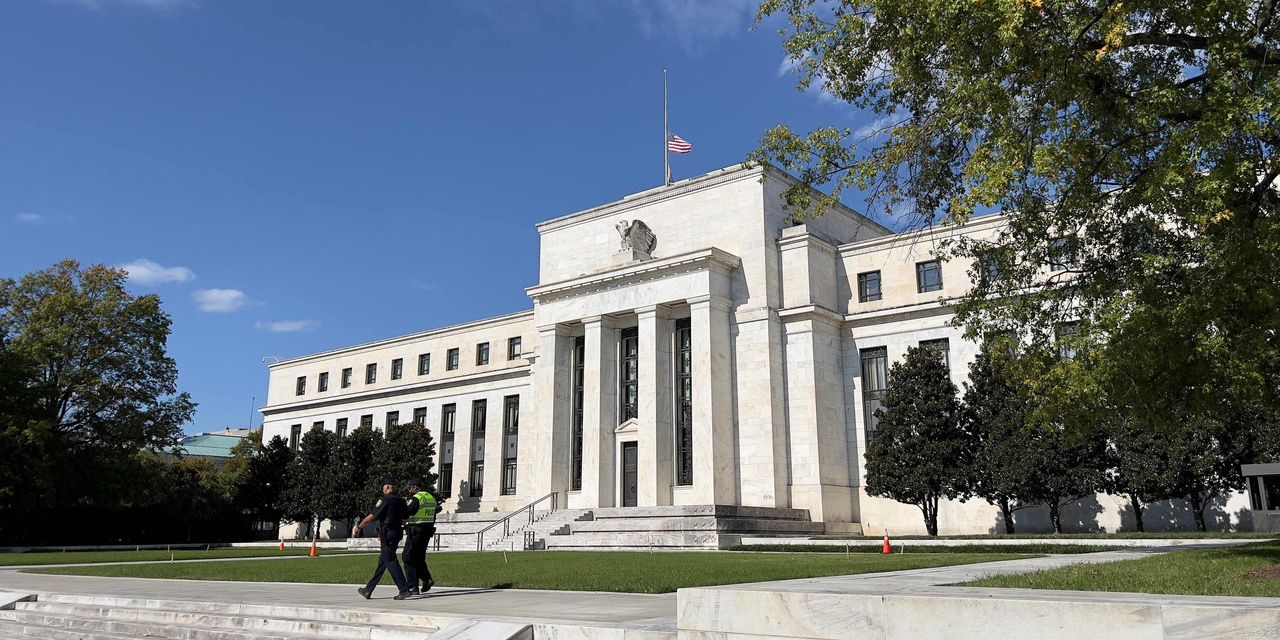Market Extra: Hedge funds seen facing heavy losses amid wrong-way Treasury bets ahead of Fed tapering, traders say

Some hedge funds are likely to be facing substantial losses as the result of a steady narrowing in the differential between yields for long-dated U.S. government debt and shorter-dated ones, traders said on Friday.
Concerns about possible losses come as global yield curves have been flattening, with short-term rates rising at a faster pace than long-term rates have — a harbinger of potential economic trouble. That’s the opposite of what many expected to happen, particularly ahead of the Federal Reserve’s policy meeting in Washington next week.
Global bond markets have seen curves flatten recently on expectations that central banks will need to raise interest rates, and thus increase borrowing costs, into an uncertain economic recovery from COVID-19, with momentum building even further after the Bank of Canada decided on Wednesday to pull back on COVID-era stimulus and move up its rate-increase projections.
On Friday, the spread between the 5- TMUBMUSD05Y, 1.186% and 30-year Treasury rates TMUBMUSD30Y, 1.934% flattened again to levels not seen since March 2020, and both the very short and very long ends of the curve were inverted. In addition, 5s and 30s yield curves also flattened in the U.K., Germany, Italy, and France.
Unlike other players in the market, a number of hedge funds were putting on leverage to bet on the shape of the yield curve, with many positioning for what was supposed to be a pronounced climb in long-dated yields ahead of an expected announcement by the Federal Reserve to taper $120 billion in monthly bond purchases, traders said. The announcement is likely to be made at the conclusion of a two-day policy meeting on Wednesday.
Some of the bets were made via eurodollar positions, which are considered a less risky and more liquid way to put on wagers about the shape of the yield curve. Instead of steepening as many envisioned, the curve has relentlessly flattened as fixed-income investors’ outlook for economic growth has darkened, resulting in a recent flurry of selling in shorter-dated debt and buying in longer-dated ones. Yields for debt and prices move in the opposite direction.
“Over the course of the last three to four weeks, leveraged funds have essentially set up for a Fed taper that results in higher rates in the U.S. Treasury market and they’ve effectively gotten caught off guard,” by lower 10- and 30-year rates and the flattening of the curve, said trader Tom di Galoma of Seaport Global Holdings in Greenwich, Connecticut.
For much of this year, many strategists had been expecting Treasury yields to eventually rise, with a number of analysts forecasting that the benchmark 10-year Treasury note TMUBMUSD10Y, 1.560%, used to price everything from mortgages to car loans, would hit 2% near the end of 2021.
“Clients generally are looking for higher rates, as am I, but a lot of people have gotten stopped out ahead of the Fed’s taper and the move in interest rates has caught them offsides,” di Galoma said via phone Friday. “At some point, we’re going to see higher rates, it’s just a matter of whether these positions are completely covered. Some hedge funds are having their best years and some are down significantly mainly because they’re playing this interest-rate volatility and are on the wrong side.”
Analysts have attributed the recent flattening of the curve in the U.S. to any number of factors. They include the view that rate hikes will only impede the economy’s recovery, as well as a more benign take that the economy is likely to slow anyway if the Fed hikes and manages to bring inflation under control. A third take is that the desire of many traders to get out of unprofitable steepener trades has only exacerbated the flattening of the curve.
“There has been some chatter about hedge funds about being offsides, but I don’t know to what extent,” said Larry Milstein, senior managing director and head of government debt trading at R.W. Pressprich & Co. in New York. “The moves with curve flattening surprised a lot of people, who were expecting higher rates. Global central banks became more reactive to higher inflation, and that’s led to a big repricing and may have done some damage to a lot of people.”
Most Treasury yields were lower on Friday, with the 2-year rate TMUBMUSD02Y, 0.501% at 0.491%, the 10-year TMUBMUSD10Y, 1.560% at 1.555% and the 30-year TMUBMUSD30Y, 1.934% at 1.941%. Meanwhile, major stock indexes advanced, with the Dow industrials DJIA, +0.25%, S&P 500 Index SPX, +0.19% and Nasdaq Composite Index COMP, +0.33% all ending October at record highs.

Comments are closed.